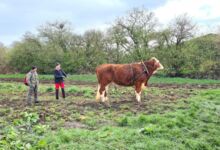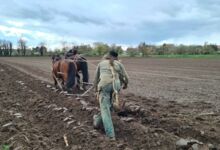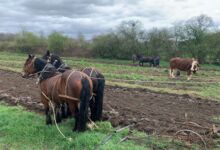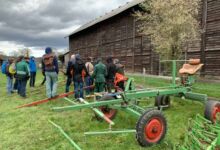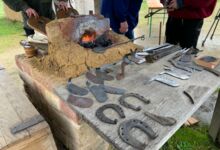Field Day in Lorsch 2023
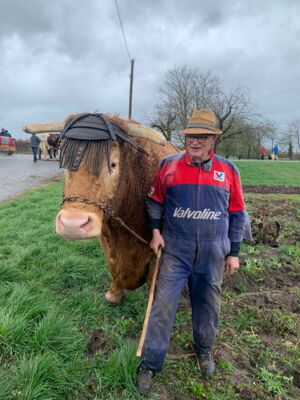
Last Sunday, a large field day was held for the second time in the surroundings of the Lauresham Open-Air Lab. The main purpose of the event was on one hand to strengthen the public awareness of animal traction systems, but on the other hand also to create a forum for professional exchange on various issues of harnessing, equipment, cultivation methods and animal welfare. In addition, there were information stands and sales booths with products that are characterized by the inclusion of animal traction in the production process.
Although the weather conditions were suboptimal, we as the organizers are very satisfied with over 500 visitors and were able to present a wide range asdifferent draft animals and also harnessing systems. It is not surprising that due to our focus on draft cattle, a total of four different breeds of cattle were represented, including one of our teams of Rhaetian gray cattle. We showed how to work in the three-pole collar as well as with the forehead yoke, and finally we also demonstrated driving from behind with a Fleckvieh ox. On the equine side, a total of two teams and a single mare were in action and demonstrated their skills both on the fields as well as in the context of wagon rides. A special feature was the use of draught goats for light field work.
In addition to the variety of different draft animals, we also tried to present as much different equipment as possible. The topics of arable farming, sowing, haymaking, grassland management and root crop cultivation were the main focus of attention. American models (e.g. I&J, Pioneer) were presented as well as European and especially German manufacturers. With great pleasure we could also refer to the new developments, which were created in cooperation with Paul Schmit from Luxembourg in the last few years and which are currently being tested and partly further developed in our museum context.
Last but not least, I would like to point out the presentation of a prototype for the further development of the three-padded collar, a "combi-collar", which is intended to combine the advantages of the neck yoke with those of the three-padded collar. A first critical practical test took place during the field day, which should now be extended by corrections and also draft measurements with pressure plates on the individual components of the collar as well as the simultaneous veterinary examination of the animal.



